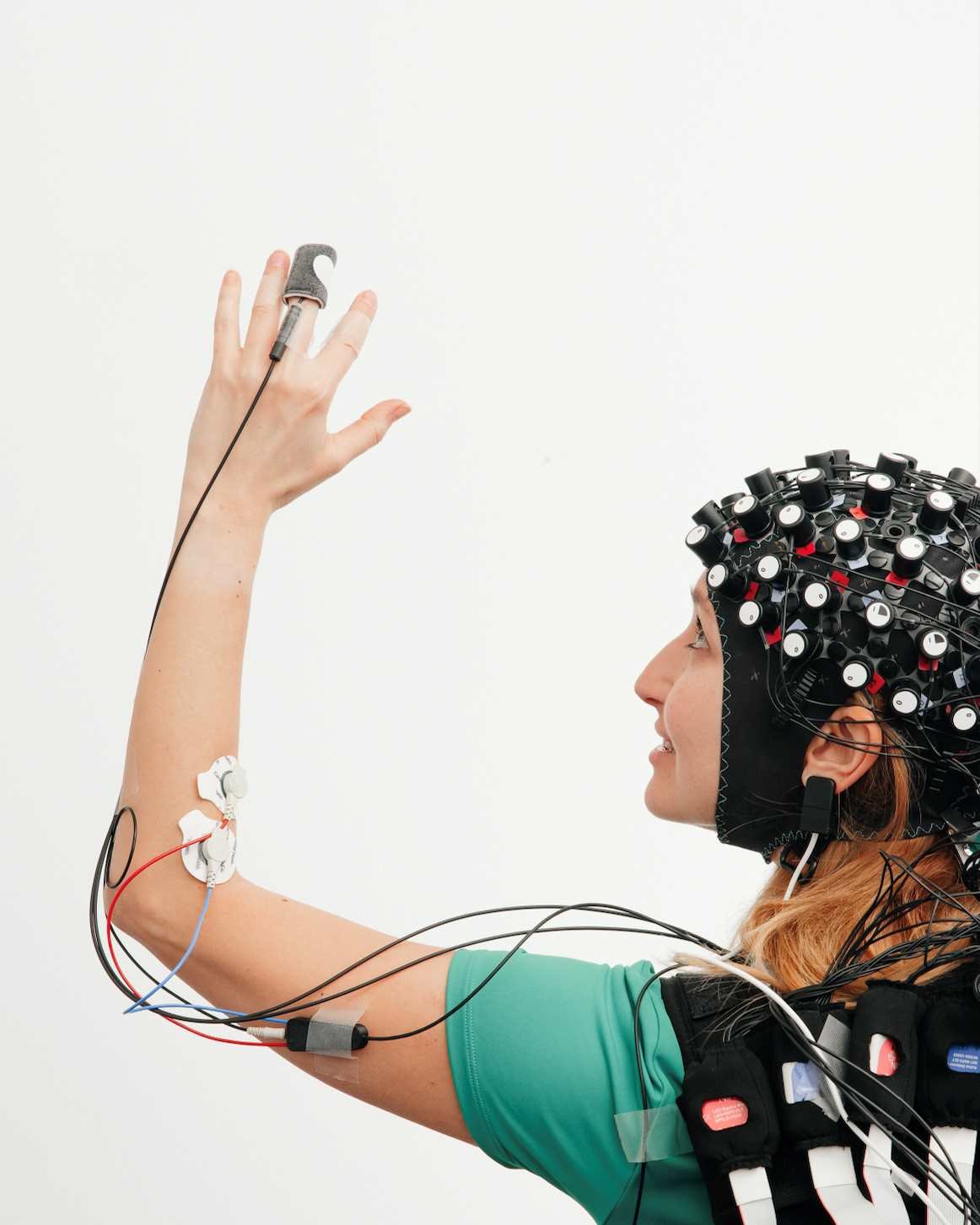
The NIRxWINGS2 module for peripheral physiology measurements extends the NIRSport2. It comes with sensors for respiration, ExG, electrodermal activity (EDA -frequently referred to as Galvanic Skin Response), temperature, and PPG pulse oximetry (PPG). All signals are fully synchronized and in one data stream in Aurora.
Wireless data transfer allows participants to move freely while data is both stored on the device and streamed in real time. The NIRSport2 platform and the NIRxWINGS2 provide a combined LSL stream, ensuring seamless integration for multimodal research.
NIRxWINGS2 Advantages
The ideal in fNIRS research is that we measure only the evoked hemodynamic response. In reality, non-evoked, systemic activity is also present. To ensure we completely isolate the metabolic brain activity (i.e., HbO and HbR) due to the task we are interested in, we can measure peripheral physiological data (e.g., heart rate, respiration, tonic/phasic skin conductance, SpO₂). These additional signals help explain more variance in the fNIRS signal, improving research outcomes.
With NIRxWINGS2, you can move outside the lab into complex, dynamic, and multi-sensory real-world environments to conduct Systemic Physiology-Augmented fNIRS (SPA-fNIRS). The system enables new experimental paradigms and the creation of high-quality research databases. You can read more about the importance of physiological signals in fNIRS in this blog post.
New Feature: The NIRx BioLink
The NIRx BioLink allows full customization of your sensor setup. It integrates sensor types RESP, ExG, EDA, and TEMP into a single sensor port, streamlining data collection while maintaining flexibility for your research needs.
Key specifications
Data transmission: WiFi and internal storage (via Bluetooth connection to NIRSport2)
A/D Resolution: 24-Bit
Sampling Rate: 500 Hz
Sensors: Universal sensor ports for customizable setup.
Export Data: CSV (text). Exported along with fNIRS data in .SNIRF format.
Physical: 101 mm x 96 mm x 30 mm, 190 g (approx.)
There have been over 1000 publications with our systems, check out more papers on this page.
+ Selected References
Scholkmann, F., Tachtsidis, I., Wolf, M., & Wolf, U. (2022). Systemic physiology augmented functional near-infrared spectroscopy: a powerful approach to study the embodied human brain. Neurophotonics, 9(3), 030801.
Tachtsidis, I., & Scholkmann, F. (2016). False positives and false negatives in functional near-infrared spectroscopy: issues, challenges, and the way forward. Neurophotonics, 3(3), 031405.
Technical References:
von Lühmann, A., Boukouvalas, Z., Müller, K. R., & Adalı, T. (2019). A new blind source separation framework for signal analysis and artifact rejection in functional near-infrared spectroscopy. NeuroImage, 200, 72-88.
von Lühmann, A., Li, X., Gilmore, N., Boas, D. A., & Yücel, M. A. (2020). Open Access Multimodal fNIRS Resting State Dataset With and Without Synthetic Hemodynamic Responses. Frontiers in Neuroscience, 14.
Use Cases Useful to identify user attention, stress, and vigilance, to detect and differentiate evoked systemic physiology in fNIRs.
Khazaei, S., Parshi, S., Alam, S., Amin, M. R., & Faghih, R. T. (2024). A multimodal dataset for investigating working memory in presence of music: a pilot study. Frontiers in Neuroscience, 18, 1406814.
Ortega, P., Zhao, T., & Faisal, A. A. (2020). HYGRIP: Full-Stack Characterization of Neurobehavioral Signals (fNIRS, EEG, EMG, Force, and Breathing) During a Bimanual Grip Force Control Task. Frontiers in Neuroscience, 14.
Mol, A., Maier, A. B., van Wezel, R. J., & Meskers, C. G. (2020). Multimodal monitoring of cardiovascular responses to postural changes. Frontiers in physiology, 11, 168.
Ahn, S., Nguyen, T., Jang, H., Kim, J. G., & Jun, S. C. (2016). Exploring neuro-physiological correlates of drivers' mental fatigue caused by sleep deprivation using simultaneous EEG, ECG, and fNIRS data. Frontiers in human neuroscience, 10, 219.







